I’m going to try to break down all the essentials you need to know in RECORD TIME! We’re going to look at the Natural Minor Scale, Harmonic Minor Scale, Melodic Minor Scale, Minor Keys, Relative Major and Minor Keys, Chords Of A Minor Key and much more.
What Is A Minor Key?
When you’re playing a song or piece of music in a minor key, you’ll be mostly using the notes derived from the minor scale. The same is true of a Major key; in that case, you’ll be predominantly using the notes from the Major scale.
Generally speaking, minor keys tend to sound more melancholy.
The Natural Minor Scale
Below you can see the A Natural Minor scale, we will use this as a reference as there are no accidentals (#’s or b’s) in this key to worry about. Take note of the intervals that make up a minor scale: Root, Major 2nd, Minor 3rd, Perfect 4th, Perfect 5th, minor 6th, minor 7th and Octave.
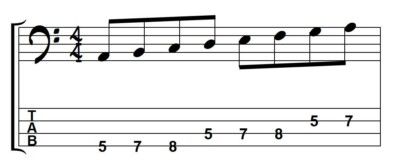
Practice playing this in different minor keys and up and down the neck in different positions. Here’s one way of playing this over two octaves.
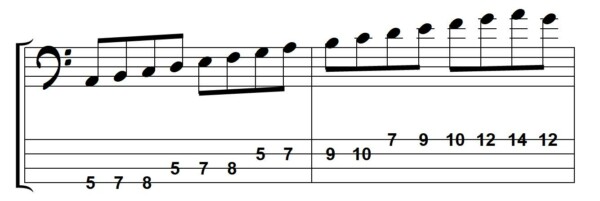
To play this coming back down the neck, you can adjust your fingering slightly as shown below. This aids with retaining a position slightly longer and avoids excessive position shifts within quick succession.
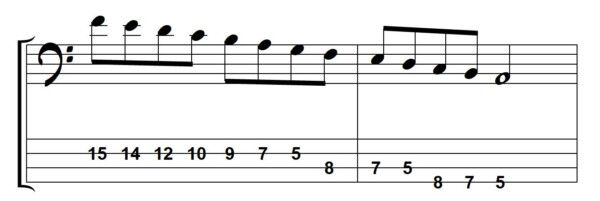
Relative Major/Minor Scale
This just means that every natural minor scale contain the same notes as a specific Major scale.
For example, the A natural minor scale contains the notes: A B C D E F G, no sharps or flats. The C Major scale contains the notes: C D E F G A B.
They both have the exact same notes, just starting at a different point. Therefore, A minor is the RELATIVE minor of C Major.
If you play the natural minor scale starting from another point, for example E minor and call the notes out loud: E F# G A B C D, then go up three frets and play G Major: G A B C D E F#, you’ll see it’s the same notes and thus, E minor is the relative of G Major.
Try this in other minor keys and see if you can find the relative Major. Remember, they must share ALL the same notes.
If you know the modes of the Major scale, then you would have noticed that the relative (natural) minor is also known as the Aeolian mode. So, another way to find the relative minor is to find the 6th degree of that Major scale.
Another point worth mentioning, is that the relative Major/minor keys, share the same Key Signature.
Chords Within A Minor Key
The find out what chords are within a minor key, then just look at the arpeggios that you create from each degree of the scale. To build an arpeggio or chord, you just play in skips of thirds.
Three note chords are called Triads, whereas the four note chords are referred to as 7th chords.
Triads 7th Chords
Chord 1: Minor Minor 7
Chord 2: Diminished Minor 7b5
Chord 3: Major Major 7
Chord 4: Minor Minor 7
Chord 5: Minor Minor 7
Chord 6: Major Major 7
Chord 7: Major Dominant 7
The Harmonic Minor Scale
This is like a natural minor scale, except we raise the 7th degree to become a Major 7th. This is just to give you a stronger cadence by changing the V (5) chord to a Major.
The Melodic Minor Scale
This is just like the Harmonic minor scale, except we also have a raised 6th. We raise the 6th degree up a semitone to become a Major 6th. So, if you play the natural minor scale, but raise the 6th and 7th degrees – then you have the Melodic minor scale.
Below we see three lines that demonstrate each minor scale in turn. The melodic line works through two beats of chord I and two beats of chord V.
Natural Minor I-V-I
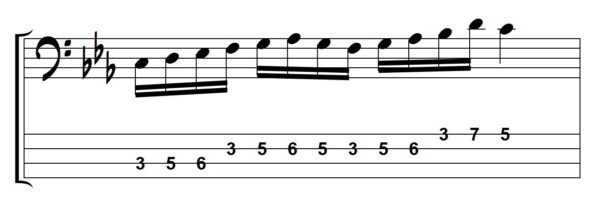
Harmonic Minor I-V-I
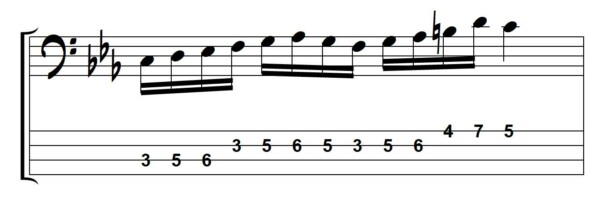
Melodic Minor I-V-I
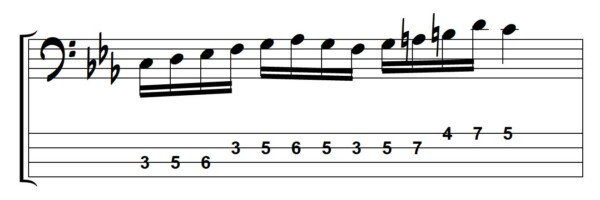




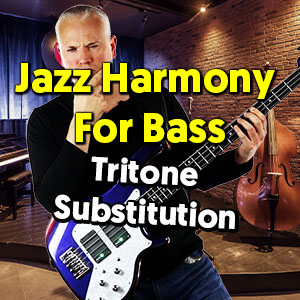





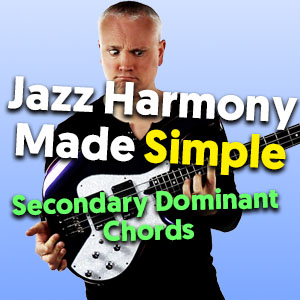
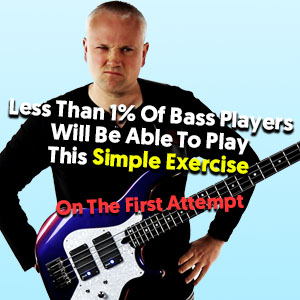

Leave A Comment